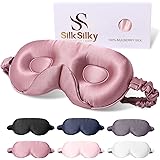Achieving Ultimate Comfort on the Trail: A Deep Dive into Backpacking Sleeping Pads
There are few things as universally anticipated as a good night’s sleep, especially after a long day of strenuous hiking. Yet, for many outdoor enthusiasts, the promise of rest beneath a starlit sky is often broken by an unforgiving surface. Imagine, if you will, the crisp morning air, the breathtaking vista, but also the lingering ache in your hips or shoulders from an uncomfortable night. This common pain point is frequently attributed to one critical piece of gear: the backpacking sleeping pad. As was highlighted in the video above, achieving true comfort on the trail does not always necessitate breaking the bank, and a range of excellent options exists.
The pursuit of a genuinely comfortable sleeping pad for backpacking can feel like a quest, with countless options promising relief from the hard ground. Personal experience often dictates that some pads perform exceptionally, while others fall short. Fortunately, discerning the truly comfortable options from the rest is possible, even across varying price points. This guide aims to expand upon the insights shared previously, offering a more detailed examination of what makes certain sleeping pads stand out, ensuring your nights under the stars are as blissful as your days on the trail.
The Foundational Pillars of Sleeping Pad Comfort and Performance
Before delving into specific models, it is beneficial to understand the core attributes that contribute to a sleeping pad’s efficacy. While personal preference undoubtedly plays a significant role, several objective characteristics are universally recognized as vital. These include the pad’s thickness, its R-value (a measure of insulation), the type of material utilized, and ergonomic design elements such as baffling patterns. A careful consideration of these factors allows for a more informed selection process.
A frequently overlooked aspect of pad design is the valve system. The ease and speed with which a pad can be inflated and deflated, along with the ability to make micro-adjustments to firmness, significantly impact the user experience. Furthermore, the inclusion or availability of a pump sack can streamline setup, particularly after an arduous day. By examining these details, a more comprehensive understanding of a pad’s overall value proposition can be established.
Decoding the R-Value: Your Guide to Thermal Insulation
The R-value of a sleeping pad is a critical specification, directly indicating its thermal resistance—or its ability to prevent heat loss from your body to the colder ground. This numerical rating is identical to the insulation measurement used in residential construction, highlighting its scientific basis. A higher R-value denotes superior insulation, making the pad suitable for colder conditions. Conversely, a lower R-value is appropriate for warmer weather, where excessive insulation could lead to discomfort.
It should be understood that R-values are not always created equal. An “estimated” R-value, as occasionally provided by manufacturers, represents their best assessment but has not undergone a standardized, third-party evaluation. Conversely, an “ASTM-rated” R-value signifies that the pad has been subjected to rigorous testing under specific conditions, providing a verified and comparable metric. For winter expeditions or conditions significantly below freezing, a higher ASTM-rated R-value is unequivocally recommended. It has been observed that the cold ground can extract an astonishing amount of body heat without adequate insulation, leading to restless and uncomfortable nights.
The Trekology UL80: Unbeatable Comfort on a Shoestring Budget
For those prioritizing affordability without sacrificing critical comfort, the Trekology UL80 is often cited as a standout performer. This pad, typically available for around $40, challenges preconceived notions about what a budget-friendly sleeping solution can offer. Indeed, it has been asserted that this particular pad has logged more nights under the stars for some users than any other, including significantly more expensive alternatives, due to its surprising comfort levels. The appeal of such an economical option that genuinely delivers on comfort is undeniable.
Key to the UL80’s comfort is its substantial 4-inch thickness. This generous loft ensures that the user’s hips and shoulders, especially for side sleepers or individuals weighing around 200 lbs, are kept well clear of the hard ground. Furthermore, its dimensions of 75 inches tall and nearly 23 inches wide provide ample space for movement, a significant advantage for taller individuals or those with a broader build. The design of the pad includes a slight dip in the middle, which is observed to create a subtle cradling effect, enhancing the feeling of being securely nestled rather than simply lying flat.
The material choice also contributes to the positive user experience. The 40D nylon employed by Trekology is noted for its less “plasticky” feel compared to many other pads. This characteristic is particularly appreciated during warmer months when skin may be in direct contact with the pad, mitigating the sensation of sleeping on an inflatable toy. Despite its thickness and comfort, the UL80 maintains a very reasonable trail weight, typically measured at around 25 ounces (718 grams). This impressive comfort-to-weight ratio makes it an excellent choice for a wide range of backpacking trips, including longer endeavors like a 100-mile through-hike, during late spring, summer, and early fall.
However, it must be acknowledged that the Trekology UL80’s estimated R-value of 1.6 to 2 restricts its use to warmer seasons. This lower insulation value is primarily due to the absence of internal insulation layers; thermal protection is provided solely by the 40D nylon and the trapped air. The inflation mechanism features a convenient two-way valve, allowing for efficient inflation and rapid deflation without accidental air loss. This thoughtful design detail enhances the overall user experience, making inflation and packing away a less cumbersome task. A pump sack is available separately or as a bundled option, weighing approximately 5 ounces when purchased independently.
The Paria ReCharge XL: A Step Up in All-Season Capability
Moving into the mid-range category, the Paria ReCharge XL presents itself as a compelling option, typically priced around $99. While a higher investment than the Trekology, this pad offers enhanced capabilities, particularly regarding insulation. It shares several desirable characteristics with its more budget-friendly counterpart, including a comfortable 4-inch thickness and generous dimensions of 76 inches tall by 23 inches wide. These measurements indicate a slight increase in length and width, providing marginally more sleep surface area, which can be advantageous for those who move frequently during sleep.
The weight of the Paria ReCharge XL is also comparable to the Trekology, coming in at approximately 26 ounces (just over 700 grams). Despite these similarities, some distinctions are notable. The Paria employs horizontal baffles rather than the cradling design of the Trekology, which some users might find slightly less comfortable, though this is often a matter of personal preference. Additionally, the 40D nylon used in the Paria ReCharge XL is sometimes perceived as having a slightly more plasticky and slicker texture. This slickness has occasionally resulted in a tendency to slide down the pad on slight inclines, a common observation with many backpacking pads.
The estimated R-value of the Paria ReCharge XL is stated as 4.7, suggesting suitability for colder conditions. While this is an estimated value and may not precisely match an ASTM rating, personal trials have demonstrated its effectiveness in temperatures well below freezing. It has been noted that for some users, a supplementary foam pad might be desired if forecasts dip significantly below zero, but generally, this pad performs admirably in cold weather. This makes it a versatile choice for shoulder seasons and moderate winter trips, particularly when full-length base layers are worn, mitigating the slightly slicker feel of the fabric.
A point of contention for some users has been the valve design of the Paria ReCharge XL. It features a simpler flap-style valve that can sometimes be prone to sticking or being difficult to manipulate, occasionally remaining open during inflation or requiring more effort to fully release air. Instances of the valve malfunctioning in cold conditions have also been reported, where it became stuck in an open position, impeding inflation. However, excellent customer service has been noted, with replacements being issued without hassle. A pump sack for the Paria ReCharge XL is available separately for approximately $18, weighing about 2.3 ounces, which is a relatively light option.
The Big Agnes Rapide SL Insulated: Premium Performance and Features
At the higher end of the spectrum, with a price point around $150, the Big Agnes Rapide SL Insulated is heralded as a premium sleeping pad offering exceptional comfort and advanced features. This pad represents a significant investment, often equating to the cost of both the Trekology and Paria combined, yet its performance metrics justify the expenditure for many experienced backpackers. The Rapide SL maintains a desirable thickness, featuring 4.25-inch high chambers on the outer edges and 3.75 inches in the middle, ensuring that plush, cradling comfort is maintained.
A distinct advantage of the Big Agnes Rapide SL is its availability in a variety of lengths and widths. This allows for precise customization to suit individual body types and sleeping preferences. While a compact 72-inch tall by 20-inch wide version may be chosen for weight savings, it has been observed that a longer 78-inch option might prevent feet from dangling or pillows from slipping off the pad for taller individuals or active sleepers. Furthermore, the pad boasts a quilted top, a design element that sets it apart from the horizontal baffling systems of the other pads, contributing to what is described as an unparalleled sleeping surface.
The weight of the Big Agnes Rapide SL Insulated is particularly impressive, coming in at a mere 18 ounces—a full 8 ounces lighter than both the Trekology and Paria. This significant weight reduction is achieved without compromising thermal performance, as evidenced by its official ASTM-rated R-value of 4.8. This high R-value is primarily attributed to the incorporation of two layers of reflective film within the pad, designed to bounce body heat back to the sleeper. The assurance of an ASTM-rated R-value provides confidence in its stated cold-weather capabilities, making it a reliable choice for extended season use.
The valve system of the Big Agnes is a minor yet highly effective detail. It features two distinct valves: one for inflation and another for rapid deflation. The inflation valve is a two-way design, specifically engineered to allow for micro-adjustments to firmness, a luxury often wished for on other pads. This setup prevents accidental full deflation when only a slight softening is desired. Moreover, the Big Agnes Rapide SL includes a pump sack weighing only about 2 ounces (50 grams) as a standard accessory, eliminating the need for a separate purchase and further enhancing its value proposition. This comprehensive package positions the Rapide SL as a top-tier choice for those demanding the best in lightweight, insulated comfort.








